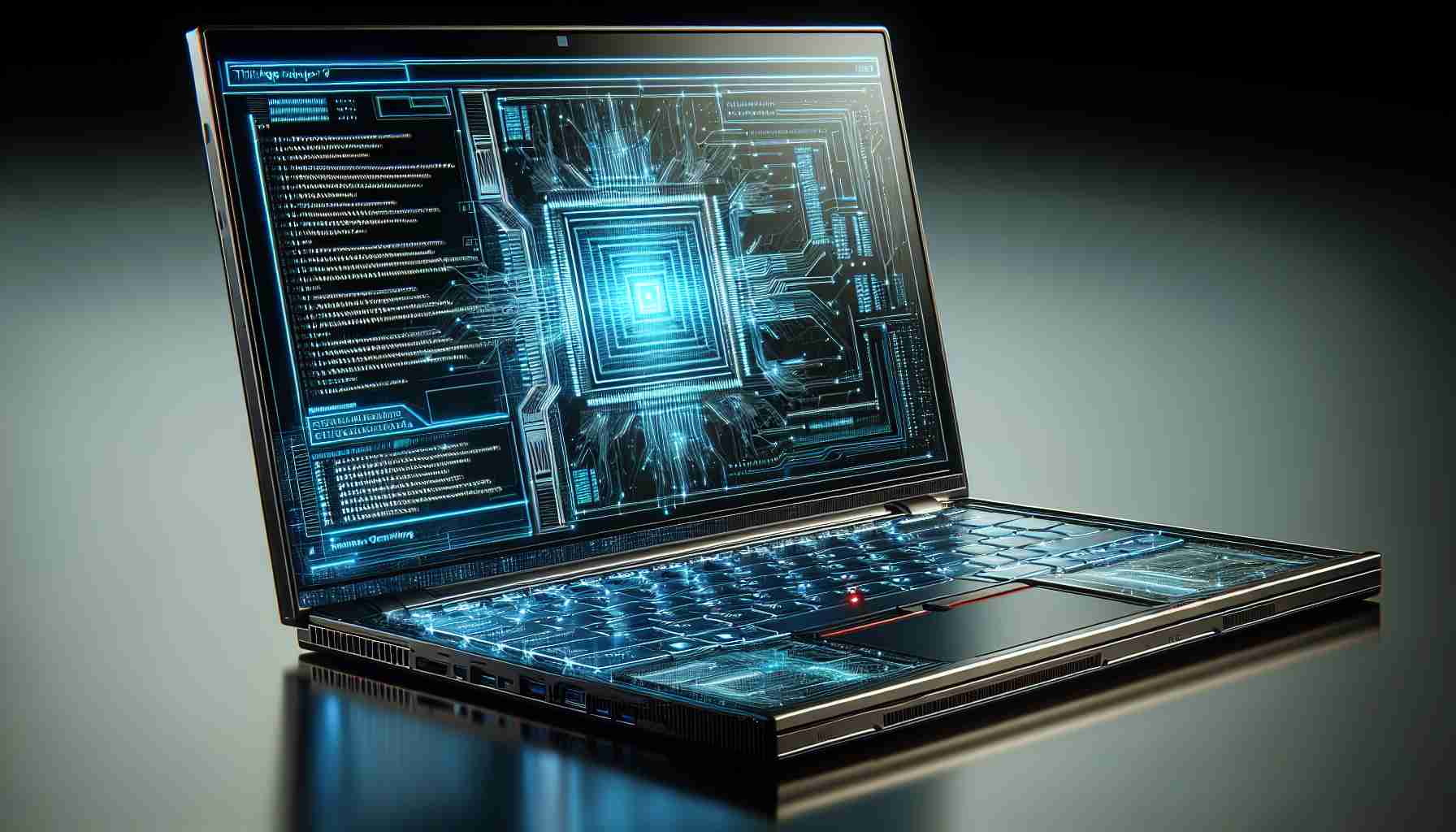Lenovo’s latest innovation, the ThinkPad P1 Gen 7, is an exceptional addition to the legion of mobile workstations, boasting a sleek and light design without compromising performance. This new release stands out with options up to a Core Ultra 9 185H CPU, catering to diverse AI processing requirements.
Graphics capabilities are versatile, offering choices from integrated Intel Arc graphics, advanced Nvidia RTX 1000/2000/3000 Ada Generation GPUs, to the powerful Nvidia GeForce RTX 4060/4070 GPU. The ThinkPad P1 Gen 7’s memory is a game-changer, being the first to integrate LPDDR5x LPCAMM2 memory, expandable up to 64GB. Storage options are equally impressive, with support for dual PCIe 4×4 M.2 2280 SSDs, achieving a whopping 8TB of space.
The device’s aesthetics are equally appealing, featuring a high-quality aluminum body and a 16-inch 16:10 display that offers a screen-to-body ratio of 91.7%. Lenovo understands the need for display variety and provides options including FHD+ IPS, QHD+ IPS, and UHD+ OLED Touch.
Connectivity is also cutting-edge with Wi-Fi 7 and Bluetooth 5.3 support, along with a plethora of ports that include Thunderbolt 4, USB-C, USB-A, an SD Express 7.0 card reader, HDMI 2.1, and an audio jack. To ensure consistent performance during intensive tasks, select configurations of the ThinkPad P1 Gen 7 boast a sophisticated liquid metal thermal design.
Assuring productivity without frequent recharges, the laptop comes equipped with a 90Whr customer replaceable battery. Lenovo and Intel’s collaboration shines in this iteration, with Roger Chandler of Intel highlighting the integration of processors that improve AI capability, efficiency, and collaborative experiences on laptops.
Mark your calendars for June 2024 to seize this combination of elegance and endurance, with pricing commencing at $2,619.
Important Questions and Answers:
1. What distinguishes the ThinkPad P1 Gen 7 as an AI processing powerhouse?
The ThinkPad P1 Gen 7 comes with options up to a Core Ultra 9 185H CPU, which has the capabilities necessary for AI processing requirements. The integration of LPDDR5x LPCAMM2 memory expandable up to 64GB and advanced GPU options, including the Nvidia RTX Ada Generation GPUs, further solidify its capabilities in AI workload processing.
2. What kind of display options does the ThinkPad P1 Gen 7 offer?
The ThinkPad P1 Gen 7 offers a 16-inch 16:10 display with a high screen-to-body ratio, including FHD+ IPS, QHD+ IPS, and UHD+ OLED Touch variants. These options cater to different user preferences for image quality and interaction, whether for regular use or more graphically intensive tasks.
3. How does the ThinkPad P1 Gen 7 address thermal management?
Select configurations feature a sophisticated liquid metal thermal design to maintain performance during intensive tasks. This thermal management system is crucial for workstations to prevent overheating and throttling, ensuring sustained performance levels.
Key Challenges or Controversies:
– A key challenge for the ThinkPad P1 Gen 7 will be to balance the powerful performance with sufficient battery life; high-performance components typically drain battery faster.
– The pricing starting at $2,619 might be seen as a barrier for some professionals and enthusiasts, positioning the device within a premium market segment.
– Given that the model is not yet released, it remains to be seen how it will stack up against competitors when it comes to real-world AI processing performance.
Advantages:
– The ThinkPad P1 Gen 7 provides powerful CPU and GPU options catering to AI processing and advanced computing needs.
– Users have a variety of high-quality display options and can experience a high screen-to-body ratio for an immersive visual experience.
– The device includes cutting-edge connectivity features such as Wi-Fi 7, Bluetooth 5.3, and a plethora of ports ensuring high transfer speeds and versatile connections.
Disadvantages:
– High price point, which might not be accessible for all users.
– High-performance components may lead to shorter battery life, though Lenovo has attempted to mitigate this with a 90Whr customer-replaceable battery.
– Weighing performance versus portability, some users might find the device to be heavier or bulkier due to the components needed for AI processing.
For more information, you can visit the official Lenovo website: Lenovo.
The source of the article is from the blog mivalle.net.ar
